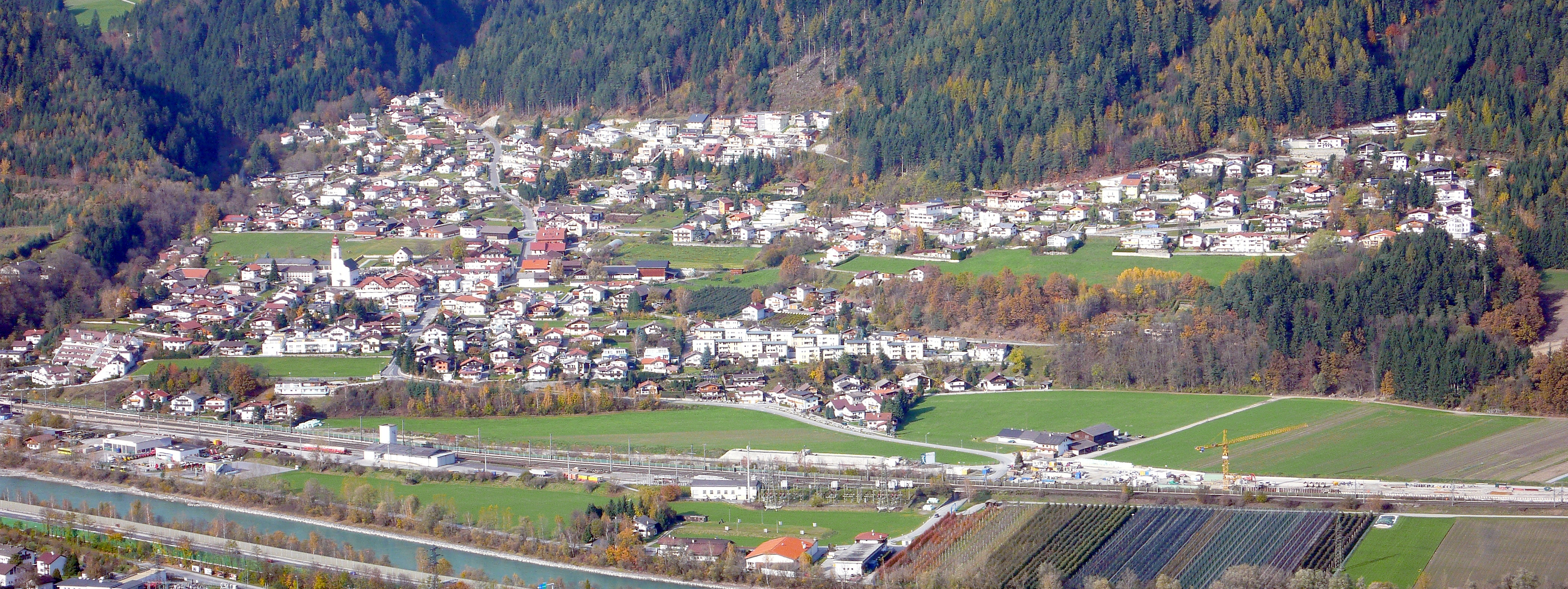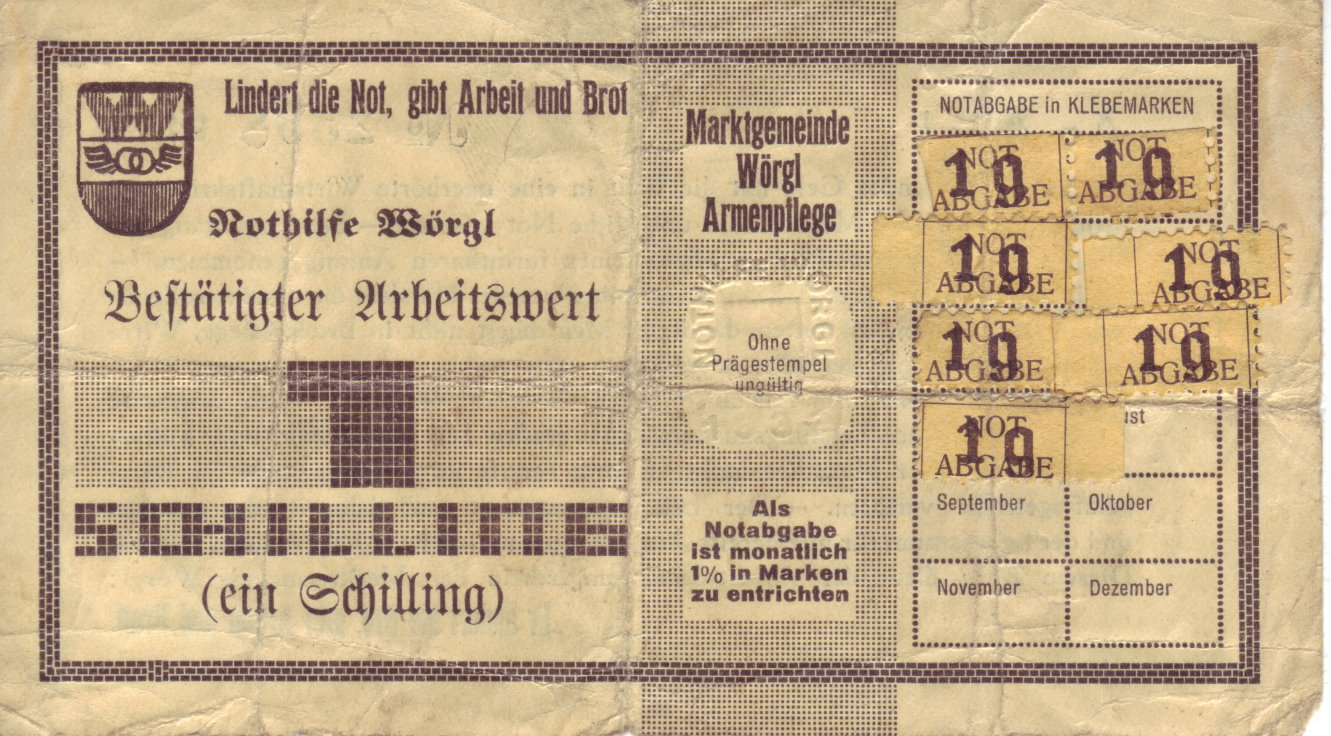|
Lower Inn Valley Railway
The Lower Inn Valley Railway (german: Unterinntalbahn) is a two-track, electrified railway line that is one of the major lines of the Austrian railways. It was originally opened as the '' k.k. Nordtiroler Staatsbahn'' (Imperial and Royal North Tyrolean State Railway). It begins at the German border near the Austrian city of Kufstein as a continuation of the Rosenheim–Kufstein line and runs in a generally south-westerly direction through Tyrol along the Inn valley to Innsbruck. The line is part of the Line 1 of Trans-European Transport Networks (TEN-T). The line is owned and operated by Austrian Federal Railways (ÖBB). History Emperor Franz Joseph I of Austria had ordered its construction in 1853. The line was the first railway in western Austria, opened on 24 November 1858. New line In order to increase the capacity of the track and in preparation for the construction of the Brenner Base Tunnel a new high-capacity line has been built between Kundl1 junction and Fritz ... [...More Info...] [...Related Items...] OR: [Wikipedia] [Google] [Baidu] |
Passenger Rail Terminology
Various terms are used for passenger railway lines and equipment; the usage of these terms differs substantially between areas: Rapid transit A rapid transit system is an electric railway characterized by high speed (~) and rapid acceleration. It uses passenger railcars operating singly or in multiple unit trains on fixed rails. It operates on separate right-of-way (transportation), rights-of-way from which all other vehicular and foot traffic are excluded (i.e. is fully grade separation, grade-separated from other traffic). It uses sophisticated railway signalling, signaling systems, and railway platform height, high platform loading. Originally, the term ''rapid transit'' was used in the 1800s to describe new forms of quick urban public transportation that had a Right-of-way (railroad), right-of-way separated from street traffic. This set rapid transit apart from horsecars, trams, streetcars, bus, omnibuses, and other forms of public transport. A variant of the term, ''mass ... [...More Info...] [...Related Items...] OR: [Wikipedia] [Google] [Baidu] |
Brannenburg
Brannenburg is a Municipalities of Germany, municipality in the Rosenheim (district), district of Rosenheim in Bavaria in Germany. There is a train station is located in Brannenburg. References Rosenheim (district) {{Rosenheimdistrict-geo-stub ... [...More Info...] [...Related Items...] OR: [Wikipedia] [Google] [Baidu] |
Wiesing
Wiesing is a municipality in the Schwaz district in the Austrian state of Tyrol. Geography Wiesing lies in the lower Inn valley north of the Inn at the entrance to the Ziller valley. References Cities and towns in Schwaz District {{Tyrol-geo-stub ... [...More Info...] [...Related Items...] OR: [Wikipedia] [Google] [Baidu] |
Münster, Tyrol
Münster is a municipality in the Kufstein district in the Austrian state of Tyrol located 20 km west of Wörgl and 34 km southwest of Kufstein. It is the westernmost community of the district and lies at the northern side of the Inn River. The main sources of income are tourism, agriculture and a bottling factory for mineral water Mineral water is water from a mineral spring that contains various minerals, such as salts and sulfur compounds. Mineral water may usually be still or sparkling (carbonated/effervescent) according to the presence or absence of added gases. T .... References External links Official website Cities and towns in Kufstein District {{Tyrol-geo-stub ... [...More Info...] [...Related Items...] OR: [Wikipedia] [Google] [Baidu] |
Brixlegg
Brixlegg is a market town (since 1927) in the Kufstein district in the Austrian state of Tyrol. The town lies in the Lower Inn Valley and at the entrance of the Alpbachtal. Neighbouring municipalities Alpbach, Kramsach, Radfeld, Rattenberg, Reith im Alpbachtal, Wildschönau History The town was first mentioned as „''Prisslech''“ in documents in 788, although the settlement is considered to be much older. Sights * Parish church "Unsere Liebe Frau" ("Our Lady") * Mühlbichl chapel and war memorial * Lanegg tower house * Granary building on the bank of the river Inn * Museum of Mining and Metallurgy People * Stephan Eberharter, Alpine ski racer and Olympic champion * Matthias Rebitsch, Alpinist * Karlheinz Töchterle, Federal Minister of Science and Research *Karl Pearson Karl Pearson (; born Carl Pearson; 27 March 1857 – 27 April 1936) was an English mathematician and biostatistician. He has been credited with establishing the discipline of mathemati ... [...More Info...] [...Related Items...] OR: [Wikipedia] [Google] [Baidu] |
Kramsach
Kramsach is a municipality in the Kufstein district in the Austrian state of Tyrol located 27 km southwest of Kufstein and 16.5 km west of Wörgl, at the northern side of the Inn River. Its main sources of income are the marble, timber and glass Glass is a non-Crystallinity, crystalline, often transparency and translucency, transparent, amorphous solid that has widespread practical, technological, and decorative use in, for example, window panes, tableware, and optics. Glass is most ... industries, as well as summer tourism. Kramsach is also known as the "Lake village of Tyrol" because there are six lakes nearby. References External linksWebsite of Kramsach Cities and towns in Kufstein District {{Tyrol-geo-stub ... [...More Info...] [...Related Items...] OR: [Wikipedia] [Google] [Baidu] |
Rattenberg
Rattenberg ( bar, Råttnberg) is a City on the Inn River in the Austrian state of Tyrol near Rattenberg mountain and Innsbruck. With just 400 inhabitants and a surface area of 10 ha, it is the smallest city in the country. Geography The proximity of a mountain to the south of the town means that Rattenberg, like many villages nested in steep sided valleys throughout the Tyrol region of the Alps, receives no direct sunlight for much of the winter. It is one of the few places at a significant southerly latitude that experiences a prolonged period without direct sunlight (another is Viganella, Italy), although the sky remains bright while the town is in the mountain's shadow so there is no permanent darkness or 'polar night' as experienced north of the Arctic Circle. Gallery File:Rattenberg, stadszicht met Ehemalige Augustiner- Servitenkloster en Kirche Sankt Augustinus Dm69821 foto6 2017-08-02 10.55.jpg, View to the town with former monastery and churchtower File:Rattenberg, ... [...More Info...] [...Related Items...] OR: [Wikipedia] [Google] [Baidu] |
Kundl
Kundl is a market town in the Kufstein (district), Kufstein district in the Austrian state of Tyrol (state), Tyrol. Geography Kundl is situated 7.70 km west of Wörgl as well as 18.30 km southwest of Kufstein at the southern side of the Inn River and is made up of 4 parts, namely Kundl, Liesfeld (in the north), Saulueg (in the south) and St. Leonhard (in the west). Neighbouring municipalities Breitenbach am Inn, Radfeld, Wörgl, Wildschönau History Eastward of Kundl some cremation graves with other remains were found which dated from the La Tène Culture and are now publicly exhibited in the Landesmuseum Ferdinandeum in Innsbruck. Kundl was first mentioned in a directory by bishop Arno of Salzburg in 788 under the name ''ad Quantalas'', which means ''at the white river''. This should also be the origin of the current name of the market town. In 1213 the noble line of the Kummersbrucker resided in the fortress of Kundl, of which nowadays only the ruins remain. In the 1 ... [...More Info...] [...Related Items...] OR: [Wikipedia] [Google] [Baidu] |
Wörgl
Wörgl () is a city in the Austrian state of Tyrol, in the Kufstein district. It is from the international border with Bavaria, Germany. Population Transport Wörgl is an important railway junction between the line from Innsbruck to Munich, and the inner-Austrian line to Salzburg. Its railway station has been designated as a ''Hauptbahnhof'' (german: main station) since 10 December 2006. European route E641 connects Wörgl with Salzburg, the routes E45 and E60 (Austrian autobahn A12) pass through Wörgl. File:Bahnhof Wörgl alt.jpg, Wörgl railway station in 1900 File:Wörgl Gare 1965.jpg, Wörgl railway station in 1965 History World War II Nearby Itter Castle was the site of one of the last European and most unusual battles of World War II. The Battle for Itter Castle was fought on 5 May 1945 by surrendered Wehrmacht troops, the United States Army, Austrian Resistance fighters and former French political prisoners against the 17th ''Waffen-SS Panzer Grenadier ... [...More Info...] [...Related Items...] OR: [Wikipedia] [Google] [Baidu] |
Wörgl Central Station
Wörgl () is a city in the Austrian state of Tyrol, in the Kufstein district. It is from the international border with Bavaria, Germany. Population Transport Wörgl is an important railway junction between the line from Innsbruck to Munich, and the inner-Austrian line to Salzburg. Its railway station has been designated as a ''Hauptbahnhof'' (german: main station) since 10 December 2006. European route E641 connects Wörgl with Salzburg, the routes E45 and E60 (Austrian autobahn A12) pass through Wörgl. File:Bahnhof Wörgl alt.jpg, Wörgl railway station in 1900 File:Wörgl Gare 1965.jpg, Wörgl railway station in 1965 History World War II Nearby Itter Castle was the site of one of the last European and most unusual battles of World War II. The Battle for Itter Castle was fought on 5 May 1945 by surrendered Wehrmacht troops, the United States Army, Austrian Resistance fighters and former French political prisoners against the 17th ''Waffen-SS Panzer Grenadier'' Di ... [...More Info...] [...Related Items...] OR: [Wikipedia] [Google] [Baidu] |
Salzburg Hauptbahnhof
Salzburg Hauptbahnhof (German for Salzburg main station; abbreviated Salzburg Hbf and occasionally translated as Central Station) is the main railway station in Salzburg, capital of the federal state of Salzburg in Austria. It is the most important station in the agglomeration of Salzburg, and a major transportation hub in western Austria. Overview For a long time, Salzburg Hauptbahnhof has been a border station at the Austrian border with Germany. It serves both the Austrian Federal Railways (ÖBB) and the Deutsche Bahn AG. It also forms a junction between several ÖBB local and long-distance transport routes. At Salzburg Hbf, the Western Railway from Vienna and Linz links with the Rosenheim–Salzburg railway, on which, along with international trains, so-called ÖBB corridor services make express connections with the Tyrol and the Vorarlberg, via the ''German Corner'' at Rosenheim. Another main line, the Salzburg-Tyrol railway, heads from Salzburg Hbf in a southerly direction ... [...More Info...] [...Related Items...] OR: [Wikipedia] [Google] [Baidu] |
Salzburg-Tyrol Railway
{{Infobox rail line , box_width = auto , name = Salzburg-Tyrol Railway , native_name = Salzburg-Tiroler-Bahn , native_name_lang = de , image = EC 163 bei Fieberbrunn, 08.12.2016.jpg , image_width = 300px , caption = EC 163 Transalpin passes the Kaiser Mountains. , type = Heavy rail, Passenger/Freight railIntercity rail, Regional rail, Commuter rail , status = Operational , locale = SalzburgTyrol , start = Salzburg Hauptbahnhof , end = Wörgl Hauptbahnhof , stations = 55 , open = Stages between 1873–1875 , close = , owner = Austrian Federal Railways , operator ... [...More Info...] [...Related Items...] OR: [Wikipedia] [Google] [Baidu] |





